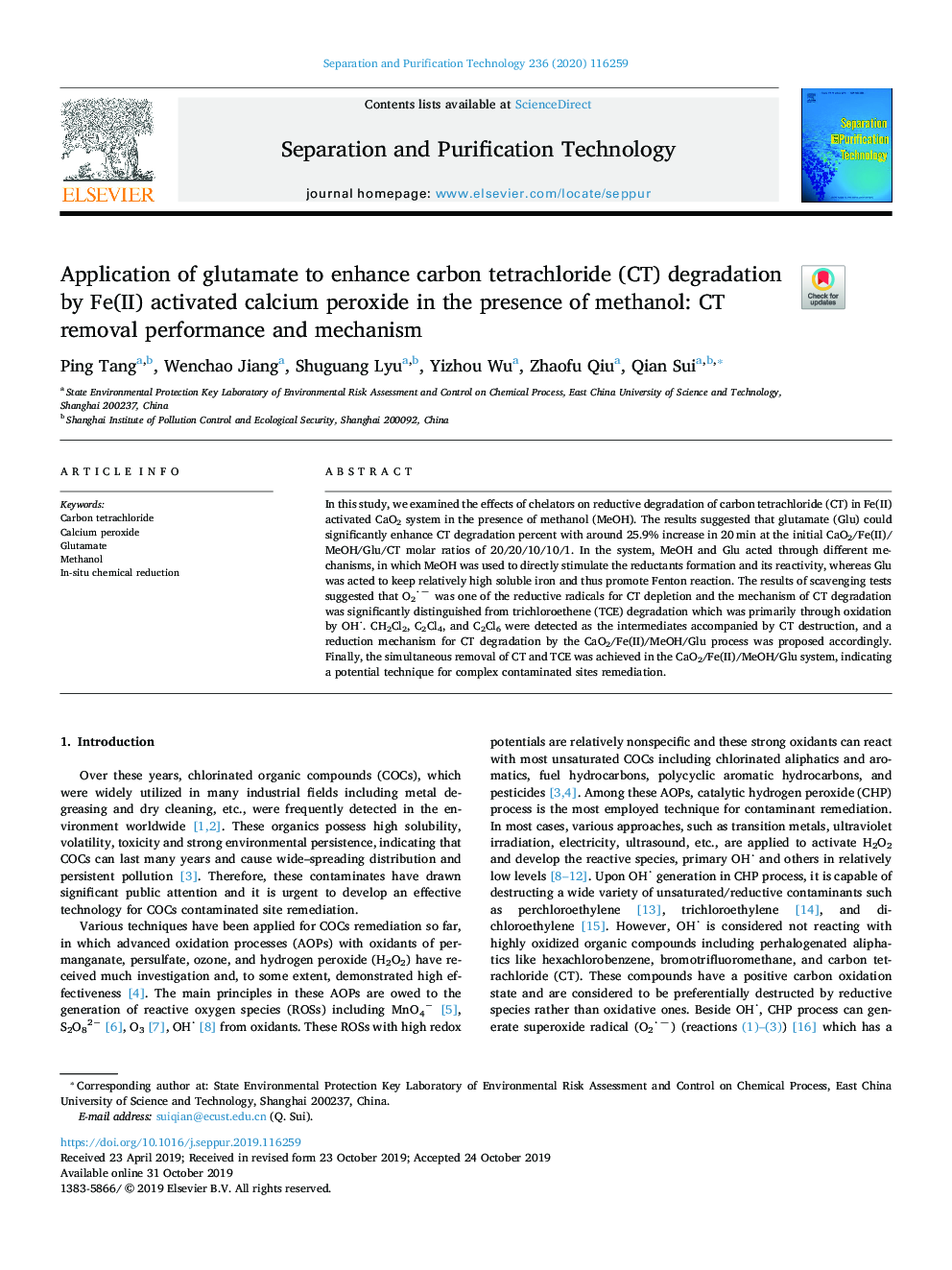| Article ID | Journal | Published Year | Pages | File Type |
|---|---|---|---|---|
| 13442695 | Separation and Purification Technology | 2020 | 9 Pages |
Abstract
In this study, we examined the effects of chelators on reductive degradation of carbon tetrachloride (CT) in Fe(II) activated CaO2 system in the presence of methanol (MeOH). The results suggested that glutamate (Glu) could significantly enhance CT degradation percent with around 25.9% increase in 20â¯min at the initial CaO2/Fe(II)/MeOH/Glu/CT molar ratios of 20/20/10/10/1. In the system, MeOH and Glu acted through different mechanisms, in which MeOH was used to directly stimulate the reductants formation and its reactivity, whereas Glu was acted to keep relatively high soluble iron and thus promote Fenton reaction. The results of scavenging tests suggested that O2â was one of the reductive radicals for CT depletion and the mechanism of CT degradation was significantly distinguished from trichloroethene (TCE) degradation which was primarily through oxidation by OH. CH2Cl2, C2Cl4, and C2Cl6 were detected as the intermediates accompanied by CT destruction, and a reduction mechanism for CT degradation by the CaO2/Fe(II)/MeOH/Glu process was proposed accordingly. Finally, the simultaneous removal of CT and TCE was achieved in the CaO2/Fe(II)/MeOH/Glu system, indicating a potential technique for complex contaminated sites remediation.
Related Topics
Physical Sciences and Engineering
Chemical Engineering
Filtration and Separation
Authors
Ping Tang, Wenchao Jiang, Shuguang Lyu, Yizhou Wu, Zhaofu Qiu, Qian Sui,
